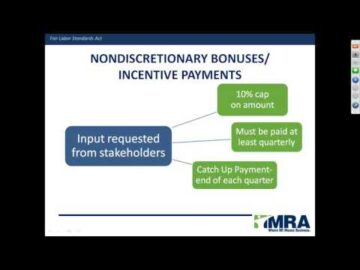
One of the uses of ratio analysis is to compare a company’s financial performance to similar firms in the industry to understand the company’s position in the market. The management can then use the information to formulate decisions that aim to improve the company’s position in the market. Analysts rely on current and past financial statements to obtain data to evaluate the financial performance of a company. They use the data to determine if a company’s financial health is on an upward or downward trend and to draw comparisons to other competing firms. Ratio analysis refers to the analysis of various pieces of financial information in the financial statements of a business. They are mainly used by external analysts to determine various aspects of a business, such as its profitability, liquidity, and solvency.

So, pull out those balance sheets and income statements, and start calculating some accounting ratios for your business today. Some common liquidity ratios include the quick ratio, the cash ratio, and the current ratio. Liquidity ratios are used by banks, creditors, and suppliers to determine if a client has the ability to honor their financial obligations as they come due. Liquidity ratios measure a company’s ability to meet its debt obligations using its current assets. When a company is experiencing financial difficulties and is unable to pay its debts, it can convert its assets into cash and use the money to settle any pending debts with more ease.
What Is Conversion Cost? – Formula, Examples, Calculation
A high ratio could also indicate that the company is not making sufficient use of cheap short-term finance. Gross margin
Operating profit margin looks at profits after charging non-production overheads. Gross margin on the other hand focuses on the organisation’s trading activities. Once again, in simple terms, the higher the better, with poor performance often being explained by prices being too low or cost of sales being too high.

Profitability Ratios measure the company’s capability and efficiency in utilizing its capital in order to generate revenue and ultimately profits. Generally represented in % terms, it represents the relation of the unit in terms of % of sales. Like the quick ratio, the current ratio uses your asset and liability totals, but in this case, they are used to determine the ability of your company to pay long-term debt.
Application of Ratio Analysis
The financial reports that accounting ratios are based on represent much of the core essence of a business. They paint a picture of where a company came from, how they are doing currently, and where they are going into the future. The ratios may seem simple at first, but they are incredibly nuanced and can be difficult to calculate once one is attempting to analyze and quantify Fortune 500 companies. Often, accounting ratios are calculated yearly or quarterly, and different ratios are more important to different industries. For example, the inventory turnover ratio would be significantly important to a retailer but with almost no significance to a boutique advisory firm.

When we account for our environment, we are able to harness opportunities to confront climate change, promote prosperous and resilient communities, and invest in strong infrastructure. We must measure what we value, not just value what is simple to measure. Fixed assets ratio of more than ‘1’ implies that fixed assets are purchased with short-term funds, which is not a prudent policy. If the ratio is less than one it indicates that a portion of working capital has been financed by long-term funds. It is desirable in that part of working capital is core working capital and it is more or less a fixed item. The ratio establishes the relationship between fixed assets and long-term funds.
These accounting ratios will also give you a clear vision of where your company stands today so you can plan for not only potential emergencies, but also profits and growth. It compares the value of your company’s current income against the profits it generates during that same time period. The return-on-assets ratio shows how much profit your company generates from its assets – that is, how efficiently your company is using its resources to turn a profit.
Examples of Ratio Analysis in Use
It should be compared with returns on offer to investors from alternative investments of a similar risk. Financial ratios are typically divided into the classifications noted below. For example, if your net income is $10,000 and the shareholders’ equity is $60,000, the return on equity would be nearly 17%, which falls in the good range.
SEC Approves NYSE and NASDAQ Clawback Listing Standards … – McMillan LLP
SEC Approves NYSE and NASDAQ Clawback Listing Standards ….
Posted: Tue, 01 Aug 2023 07:00:00 GMT [source]
Though some benchmarks are set externally (discussed below), ratio analysis is often not a required aspect of budgeting or planning. Return on assets indicates return 9 of the best infographic examples of 2021 generated by a company on its assets. A higher return on assets ratio indicates that the company is able to generate more income from the given amount of assets.
Solvency Ratios
However, if you have a viable plan to reduce overhead and turn the ratio around, your company may be in fine shape after all. To find your debt ratio, divide your company’s combined debts by its total assets. A financial number on its own has no significance in analyzing a company unless reading it in comparison with other numbers. A ratio is thus important as it provides the information in a comparative form aiding in carrying out a quantitative analysis of financial statements. A quick ratio can be used to evaluate the ability of your business to meet its immediate financial obligations. Quick ratio numbers are obtained from your balance sheet and compare your asset total with your liability total.
Higher ratio indicates higher efficiency and lower ratio indicates ineffective usage of capital. The former formula which relates the fixed assets to the cost of sales is more popular and preferable. The objective of this ratio is to measure the liquidity of receivables or obtaining the average period over which receivables are uncollected. This ratio is of use to prospective investors to decide whether to invest in the equity shares of a company at a particular market price or not. Total operating expenses here include cost of goods sold administrative expenses and Selling and distribution expenses.
If your business is expanding, this ratio may be high because you are using the debt to finance the essentials that will translate to higher profits. For example, your restaurant may be doing so well that you have recently opened a fourth location and taken a loan to purchase commercial refrigerators. That loan balance will have increased your debt-to-equity ratio in the short term, but as you pay down the loan and turn a profit, that ratio will fall. Your debt-to-equity ratio gives you and your prospective lenders an instant reading of your company’s financial health.
- When necessary in the exam, you will be told which definition to use.
- Solvency means the ability of the business to repay its outside liabilities.
- Quick or liquid assets refer to assets which are quickly convertible into cash.
- Both that roadmap and this guidance will help inform decisions that affect nature, and will better reveal how those changes ultimately affect people.
It reflects upon the capacity of the concern to pay divided to its equity shareholders. The ratio is calculated by dividing the net profit after tax and preference dividend by number of equity shares. It shows the operational efficiency of the firm and is a measure of the management’s efficiency in running the routine operations of the firm. Operating ratio measures the amount of expenditure incurred in production sales and distribution of output.
Such a firm has the ability to accelerate its profits at a faster rate. Capital structure ratios establish the relationship between the Creditors’ Fund and Owners’ Capital. Therefore, to judge the long-term financial position of the firm, financial leverage or capital structure ratios are calculated. In case of low debt-equity ratio, creditors claim a high stake and implies sufficient safety margin against shrinkage in assets.
First National Financial: Impressive Earnings and Growth Potential … – Best Stocks
First National Financial: Impressive Earnings and Growth Potential ….
Posted: Tue, 01 Aug 2023 22:48:03 GMT [source]
When it comes to data analysis, leaders should invest in advanced tools and training for their accounting teams. This will empower them to transition from data entry to data analysis, and advisory offering valuable insights that can influence strategic decisions and growth opportunities. Progress in data analysis tools has enabled accountants to shift from crunching numbers to mining data. Accountants can now scrutinize vast data sets and draw meaningful insights that can steer business decisions.